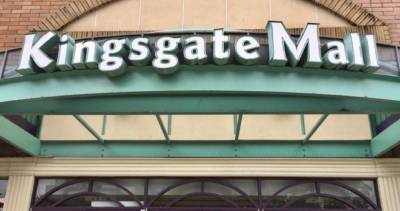News from the art world
ARTS COMPLEX STILL VIEWS TO JOIN PRECINCT
City council continues to hedge over the proposed construction of the Coal Harbour Arts Complex, a facility that would contain two performance halls: an 1,800-seat theatre and a smaller 450-seat venue. According to David Pay, a member of the volunteer board overseeing the CHAC (and artistic director of the recently launched Music on Main series), the complex has long been touted as among the most potentially valuable additions to the city’s stock of performing-arts venues.
“Since 1990 the city of Vancouver has recognized the need for a midsized [1,800-seat] lyric hall as the number one cultural-facility priority,” Pay told the Straight. “All of the studies we’ve undertaken since then have reiterated the extraordinary need for that, plus the small hall.”
Still, despite being approved and funded by the city back in 1991, the CHAC has never been able to find a home for itself. Only two years ago it was bumped from a prospective site at the north end of Burrard Street by the Vancouver Convention Centre Expansion Project. (Hence the Coal Harbour that remains part of the homeless complex’s name.) In its latest bid for a site, the CHAC is one of several projects the city is considering for the hub of a so-called cultural precinct, focused on the former bus-depot site at Cambie and West Georgia streets and fusing such existing facilities as the Queen Elizabeth Theatre, the CBC Broadcasting Centre, and Library Square into a kind of demarcated zone for cultural institutions. On November 2, council met to discuss a staff report on the current status of this ambitious plan. Pay addressed the meeting in an attempt to ensure that the CHAC is not set aside yet again—this time in favour of the many other potential projects jostling for a spot on the former bus-depot site, among them a national aboriginal art gallery, a federal-government office tower, a new and enlarged Vancouver Art Gallery, and what’s referred to in the report as “a centre for Asia-Pacific Trade and Culture”.
“The Coal Harbour Arts Complex Society fully supports the concept of a cultural precinct—in fact, we were the precursors to the cultural precinct,” Pay explained to the Straight. “Working with city staff, we identified this site as the ideal place for the arts complex, and we recognized that the arts complex could not work on this site alone.”¦It’s essential to us that the arts complex remains a part of the cultural precinct.”
Another feature that distinguishes the CHAC proposal from the others described in the administrative report, Pay said, is the $20 million in funding that the complex’s society has already banked in trust with the city. “We also have a thorough feasibility study done last year by Bing Thom in 2008 dollars. So we’re ready to get going.”
Still, the CHAC will have to join the queue. As municipal plans stand, all that have been given the green light in the area are renovations to the Queen Elizabeth Theatre and construction of a plaza for performances and gatherings during the 2010 Olympics.
“It seems like what we’ll be doing now is an evaluation of an evaluation of an evaluation,” Pay said with a note of frustration. “And I don’t deny that we need to ensure that what we’re building is what’s needed by the city. But as a board that’s filled with directors of organizations that are desperate for facilities, we know the city needs the complex.”
> Brian Lynch
ANOTHER GLASS ACT
Mary Filer’s laminated glass sculpture, Cleft, was recently unveiled at the Wosk Centre for Dialogue. Located on the second floor of the centre’s atrium, the abstract work is a gift from the senior Vancouver artist to Simon Fraser University, in honour of president emeritus Jack Blaney. This is the second major donation Filer has made to SFU. In 1990, she and her late husband, urbanist Harold Spence-Sales, created a monumental glass sculpture for the lobby of the university’s Harbour Centre campus.
At the dedication ceremony, Filer talked briefly of her early painting career, her awakening to the expressive possibilities of glass, and her warm connection with the university. SFU president Michael Stevenson spoke of that institutions’s renewal of support for its two art galleries and its intention to move its School of Contemporary Arts downtown, into the redeveloped Woodward’s site. “The unveiling of Cleft,” he declared, “is part of a great commitment at SFU to the importance of the arts.” Filer’s work joins the university’s distinguished collection of Canadian art, including photos by Jeff Wall and Roy Arden and paintings by Landon Mackenzie and Greg Curnoe, currently on view at the Wosk Centre.
> Robin Lawrence
AWARD PITCHED TO MUSIC
Like the Chinese calendar, the Alcan Performing Arts Award works on a multiyear cycle: one year, the hefty $60,000 prize for B.C.–based performing-arts companies is handed out in the field of music/opera, the next year it goes to dance, the next to theatre, and then the rotation starts all over again. This year’s edition focuses on music/opera, and the Vancouver East Cultural Centre, which administers the award and hosts the premiere of the winning work, is accepting applications until December 8. To be eligible, a performing-arts company must be professional and registered in B.C. as a nonprofit society. For information and the requisite forms, check out vecc.bc.ca/ or call 604-251-1363.
> Brian Lynch















Comments